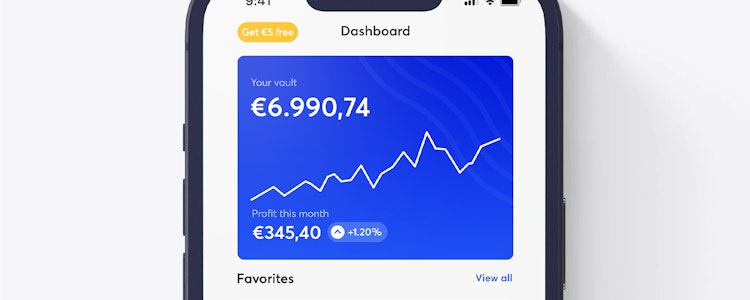News - Polygon (MATIC) plans major blockchain transformation
By
Polygon (MATIC) plans major blockchain transformation
Polygon plans to fundamentally change its blockchain. Why is the project taking this drastic step and what role will Polygon's token, MATIC, play in the future?
Mihailo Bjelic, the co-founder of Polygon, recently presented a proposal To make the current Polygon Proof of Stake (PoS) blockchain into a zkEVM-Validium Ethereum Layer-2 blockchain. Simply put, this means he wants to fundamentally revamp the technology behind the current Polygon PoS Blockchain. Disney, Reddit, Nike, Starbucks and many other major players are currently building their projects on the Polygon PoS Chain.
The change is intended to improve the ecosystem of Polygon safer, more cost-effective and, above all, faster in the long run. The upgrade is scheduled to be completed in the first quarter of 2024 will go live.
The planned upgrade to a true Ethereum Layer 2 network sheds light on a debate that is all too rarely addressed in the crypto community: the difference between sidechains at Layer 2-networks. But why is it so important? What's behind the Polygon co-founder's proposal? And how will the upgrade affect MATIC?
Sidechain vs. Layer 2 Network: a fundamental difference
Polygon's current structure operates as a sidechain of Ethereum. A sidechain is a standalone blockchain that runs in parallel with the mainchain, in this case Ethereum. It has its own consensus mechanism, in Polygon's case Proof of Stake, and offers scalability by processing transactions that do not burden the Ethereum mainchain. But it has one major drawback: the security of the sidechain depends on its own network and participants, not the security of the Ethereum Blockchain.
An Ethereum Layer-2 network, on the other hand, such as Optimism and Arbitrum are built on top of Ethereum's security. Although transactions are processed off-chain to enable scalability, they are ultimately secured by Ethereum's security infrastructure. This means that Layer 2 solutions benefit from the well-established and robust security of the Ethereum blockchain. Thus, they do not have to build a secure network with an associated consensus mechanism themselves, but can outsource this to the Ethereum mainchain. In return, however, they pay a certain amount of fees to the Ethereum mainchain for each transaction. The bottom line, however, is that L2s still save significant costs compared to Layer-1 blockchains or sidechains.
Why does Polygon want to make this transformation?
Polygon plans to address the criticism of its current position as a sidechain and close the security gap by becoming a true Ethereum L2. This move is expected to not only improve security and trust in Polygon, but also take Polygon's entire ecosystem to the next level. In his proposal, the Polygon co-founder outlines a comprehensive vision for Polygon's future that is clearly different from competitors such as Arbitrum.
Polygon 2.0's vision: a network of different Layer-2s
His vision of Polygon 2.0 is an ecosystem of Layer-2 scalable solutions, all based on Zero-Knowledge (ZK) technologie. The goal is to create several Layer-2 solutions that specialize in different application capabilities and that can all communicate with each other. Moving from PoS to zkEVM-Validium is an important step toward realizing this vision.
Moving to a true Layer-2 network requires a significant change in the underlying technology. Polygon must convert its existing PoS blockchain to a zkEVM-Validium blockchain.
Such a blockchain combines Zero Knowledge Proofs and Validium, an off-chain data storage solution, to improve scalability. At the same time, these two technologies allow Polygon to take advantage of the security of the Ethereum mainchain. So unlike Optimism or Arbitrum, Polygon is not planning to become an Optimistic rollup network, but is relying on zero-knowledge technology and Validium.
Benefits of switching and the role of MATIC
The switch brings a number of benefits, including lower transaction costs, greater scalability and stronger privacy guarantees thanks to ZK proofs.
The MATIC token, the native asset of the Polygon network, will continue to play a crucial role. It will continue to be used to pay transaction fees and participate in the PoS consensus mechanism. However, with the new infrastructure and improved efficiency, the value and use of the MATIC token may continue to grow. But this, of course, depends on the success of the upgrade.
Overall, the move marks an important step in Polygon's history and shows the project's desire to become more integrated into the Ethereum ecosystem. After all, especially in recent months, the rise of Arbitrum, Optimism and co. has shown that real Ethereum L2s are very popular with investors and developers.
By comparison: while Arbitrum now has a Total Value Locked (TVL) of more than US$2.18 billion, that is on the Polygon PoS Blockchain now only US$950 million. So Polygon's plan to become a true ETH-L2 seems like a step to avoid losing even more market share to competitors.






